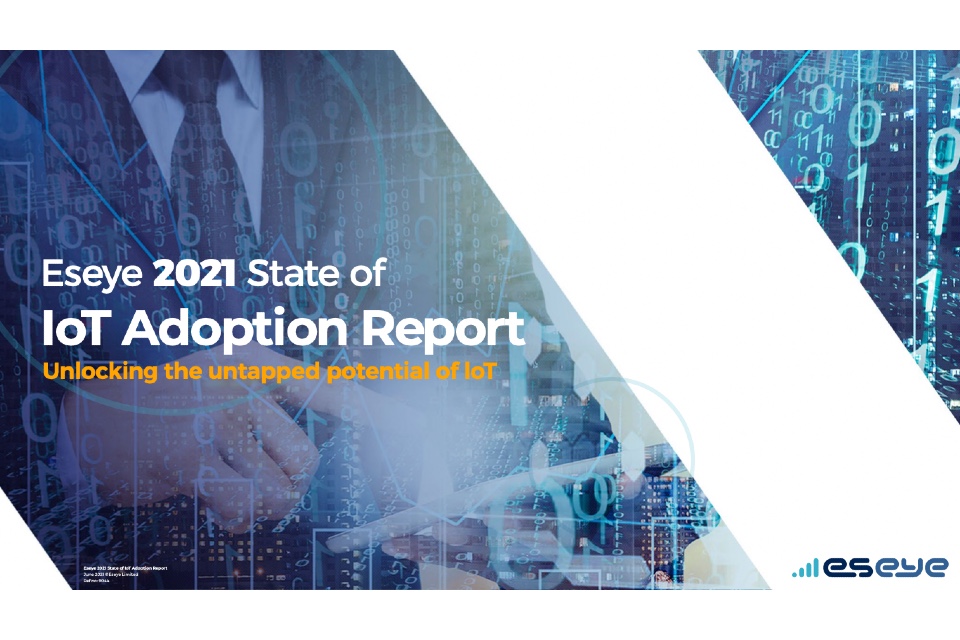By Ian Terblanche, Global Sales Director at Sigfox
The global supply chain and logistics market is set to exceed $15 trillion by 2024, developing at a CAGR of 6.0% from 2016 to 2024 by volume. However, in spite of these impressive growth figures, there has been a mere trickle of innovation in the supply chain market, set against rising levels of inefficiency.
Arguably the greatest challenge facing enterprise supply chains in 2020 is a familiar one – a lack of end-to-end visibility. The fact is that a single shipment can include over 200 interactions and more than 25 different people, often across the globe, which raises a range of challenges for delivering unified data effectively. However, this complexity is not going away, and indeed as global logistics volumes continue to rise across almost every industry vertical, the need to move to a more efficient and optimised, data-driven approach becomes ever more pressing.
There are many risks in the global supply chain, but the impact of malicious and criminal activities is increasing. Cargo freight crime prevention in the United Kingdom cost companies at least an estimated £24 million ($31 million) during 2018, according to the BSI. BSI recorded 921 cargo theft incidents across the UK during the first quarter of 2019. A wide range of methods are used to steal goods, including the use of GSM jammers to overwhelm anti-theft devices and alarm systems. GPS trackers are mitigated by storing containers in an overhead environment, blocking access to the satellites.
However, by implementing a solution that relies on radio signals that are extremely difficult to jam, warehouse theft risk is reduced giving organisations peace of mind that their alarm systems won’t fail. Moreover, in the event that cars, motorcycles, lorries or utility vehicles are stolen, they continue to seamlessly transmit GPS coordinates when equipped with this type of technology, enabling quicker and easier vehicle recovery for the authorities and insurers.
Indeed, it is increasingly the case that first-generation single-network technology is being replaced with hybrid devices that can surmount connectivity issues, whether physical, geographic or as a result of malicious activity.
RFID was once held up as the holy grail of tracking movement of goods, but the truth is that its technology is heavily flawed. RFID needs a RFID tag on the tracked item and infrastructure in the form of readers (to sense tags) and antennas (to increase the range of those senses). Implementing this type of infrastructure requires complex planning and managing between manufacturer and suppliers, hefty initial investment, developing cloud applications, system integration experts and a significant amount of time too – a supply chain operating across 500 sites can take up to 2 years to plan, install and test RFID before it’s up and running.
By approaching the problem differently, you’ll achieve different and better results. Ditching the complex nature of RFID and lookalikes for the lightweight solutions offered by wireless, low-emission networks really can revolutionise the way you track and manage across your supply chain.
It is often the case that organisations know when the shipment left the last checkpoint, for example a sea port, but do not have visibility of its exact location until the next checkpoint, which is often the next port. This level of granularity is not sufficient for many applications, especially involving foodstuffs of medical supplies, which can have specific storage and temperature logging requirements over such a distance and time. However, the Internet of Things (IoT) has the unique ability to capture vast amounts of extremely valuable data, helping businesses better understand the behaviour of people, environments and assets to give a real-time holistic view of the entire supply network.
By implementing connected devices across the supply chain, businesses gain a vast array of data that not only fulfills regulatory requirements, but also offers extremely granular insights into the efficiency and real time operation of their networks. From a full overview of routes travelled, warehouse delays and network gaps to ensuring vehicles deliver best performance limiting downtime and repairs, while ensuring driver safety is of the highest calibre, the opportunities are almost endless.
We’re seeing our customers really reap the benefits of transforming their operations in this way with IoT and Sigfoxconnectivity. For example, real-time alerts about delays and transport conditions has allowed Michelin to reduce transit stock by 10%, increase Estimated Time of Arrival (ETA) by 40% and reduce Out of Stock (OOS) situations due to exceptional circumstances (such as bad weather) by a quarter. Cost reductions and an increase in customer satisfaction are but a few of the end benefits Michelin has been able to achieve. We are seeing increasing interest across geographical locations, including the UK, via our secure sensor network operator, WND UK, which recently hit the significant network milestone of 90% complete.
This tide of innovation is beginning to deliver measurable results, such as for Deutsche Post DHL Group, which has outfitted about 250,000 DHL roll cages with Sigfox smart trackers. The result will be that the German parcel market leader will have powerful levels of visibility of the essential and valuable roll cages which are used to transport large volumes of parcels – about five million shipments in Germany each working day.
IoT is gradually beginning to transform and digitise the global supply chain, providing companies with unprecedented visibility into their own operations. The accelerating pace of change means that businesses will increasingly need to be onboard, and up-to-speed in order to maintain competitive advantage. Just a few years ago, full supply chain visibility was just a pipedream – now it is a rapidly approaching business fact.
Case study: real time container tracking improves operations for B&M
Leading North West based waste management company deploys the PIN IoT tracking solution across its fleet of roro containers
Established in 1999, B&M Waste Services delivers integrated waste management and recycling solutions to businesses across the UK. Carbon neutral since 2011, B&M continues to invest in technology and innovation to improve the service it delivers to customers.
The PIN IoT solution uses new technology to enable low cost, real time tracking of bulk containers and skips, via tracking devices with a 5-year battery life and software tailored specifically for the waste industry.
The solution enables the waste industry to avoid capital expenditure on new containers, typically for several years by eliminating loss, recovering theft and utilising excess inventory. It leverages dual tracking technologies, which means we can distinguish between normal operational movements and immediately alert when a 3rd party moves a container, tracing it to its onward destination.
Operating costs can be reduced by controlling the repair and maintenance process and moving containers around the network more efficiently.
“Each of our containers now has a digital identity, we can track every movement and understand exactly where assets are located”
Paul Curtis, Director
For more information, please visit: https://www.sigfox.com/en/supply-chain-logistics






